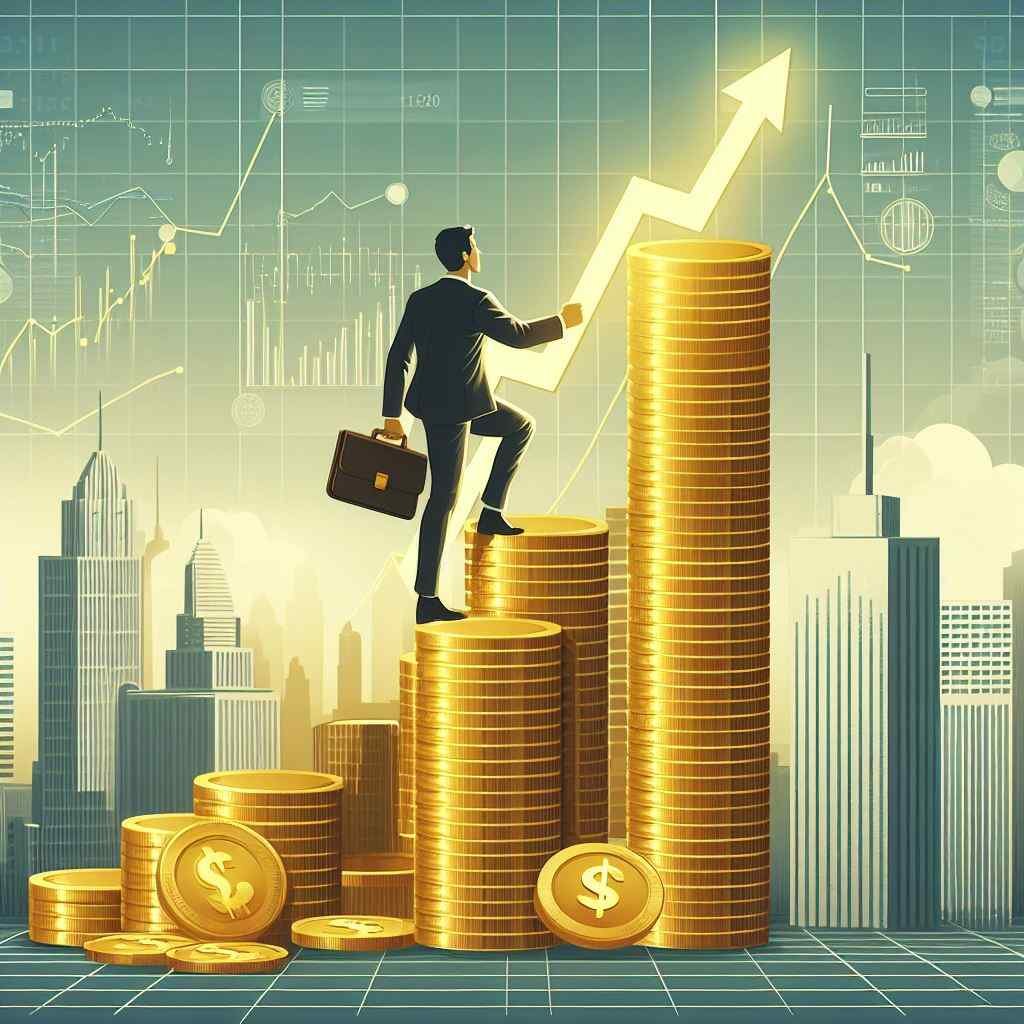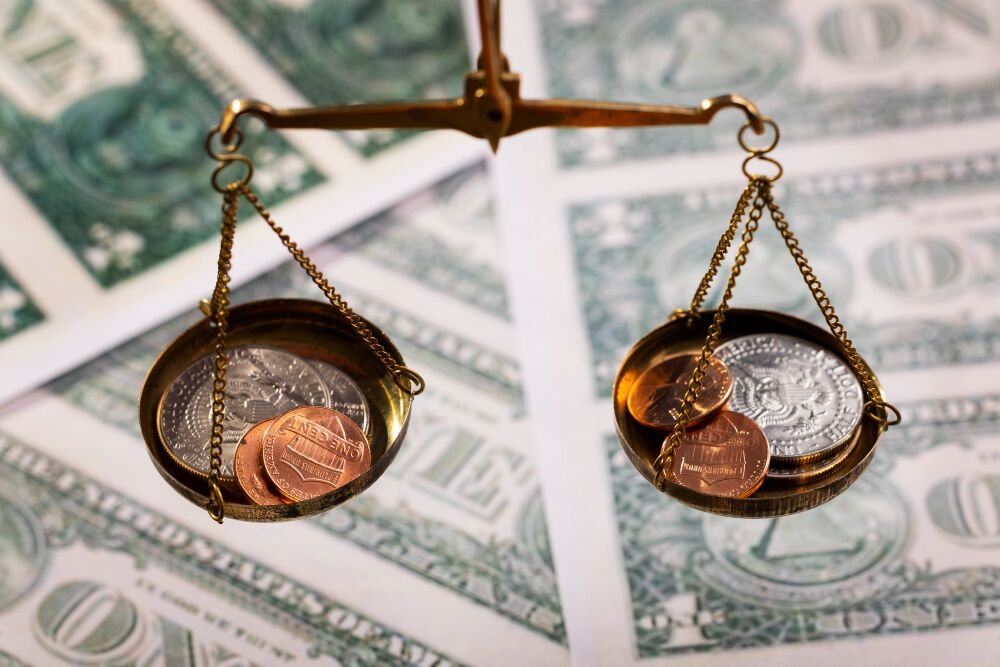Jamie Dimon, the head of JPMorgan Chase, is one of the most prominent figures in global finance today. His “House of Dimon” has risen to the pinnacle of Wall Street thanks to Dimon’s shrewd leadership, calculated risk-taking, and ability to navigate tumultuous periods. The so-called “House of Dimon” refers to the influential financial empire Dimon has built spanning commercial banking, investment banking, and beyond. This article traces the rise of Jamie Dimon house to the top of the financial world.
Follow this blog post to read more about reese witherspoon house.
Jamie Dimon’s Path to Becoming a Top Financial Titan
Jamie Dimon’s talent for taking calculated risks have allowed him to excel where many others have failed. He first rose to prominence as Sandy Weill’s protégé at Citigroup before being ousted in a power struggle, a journey anything but easy but filled with successfully acquired and integrated companies. After working in relative obscurity for a few years, Dimon took the helm of Bank One. He then orchestrated the acquisition of Bank One by JPMorgan Chase and took over leadership of the combined company.

His deals and decisions have usually turned to gold, allowing Jamie Dimon house of financial acumen to withstand the unrelenting pressures of Wall Street. Dimon led JPMorgan Chase through the financial crisis and some of the most difficult and tumultuous periods in Wall Street history. His level-headed leadership and willingness to take risks cemented his status as a top banker following the eleventh-hour rescue of Bear Stearns, further solidifying the legacy of the House of Dimon.
The Journey to the Top: Insider Accounts of Jamie Dimon’s Rise
In her book “The House of Dimon,” former business journalist Patricia Crisafulli delves into the world of Jamie Dimon, offering a rare glimpse into the personal and professional realms that constitute the “Jamie Dimon house.” Through interviews with Dimon and those who have worked closely with him, she provides insider accounts of how Dimon’s leadership and decision-making have propelled him to the zenith of contemporary Wall Street.
In her book, Crisafulli sheds light on Jamie Dimon’s early days at Citigroup, where he seemed destined to succeed Sandy Weill. It also delves into the power struggle that prompted Dimon to leave and take the reins at Bank One, as well as the strategic decisions that enabled him to expand JPMorgan amidst Wall Street’s relentless challenges. For anyone keen to grasp how Jamie Dimon house of influence rose to prominence, transforming into a towering presence in the financial world, Crisafulli’s book is indispensable.
The Role of Sandy Weill in Shaping Dimon’s Early Career
As a young talent, Jamie Dimon caught the eye of Sandy Weill, the hard-charging executive who built Citigroup into a financial empire. Weill became an early mentor for Dimon and elevated him up the ranks of Citigroup, grooming Dimon as his successor. Dimon gained invaluable experience working alongside Weill to integrate major acquisitions like Travelers and Salomon Brothers.
However, Dimon’s rise at Citi hit a roadblock when he was fired following a power struggle with Weill. This early career turbulence taught Dimon important lessons that later enabled him to excel on his own.
Overcoming Challenges: How Jamie Dimon has Survived Tumultuous Periods in Wall Street History
Wall Street is an environment that has destroyed several top CEOs, but Jamie Dimon has survived and thrived against the odds. Following his firing from Citigroup, Dimon steadily rebuilt his career by leading Bank One. Leading up to and during the 2008 financial crisis, Dimon made several daring acquisitions that proved to be enormously beneficial for JPMorgan.

His eleventh-hour rescue of Bear Stearns and his purchase of Washington Mutual at the height of the mortgage meltdown helped JPMorgan emerge stronger than ever, illustrating his knack for picking the right ones amidst chaos. Dimon’s talent for taking calculated risks allowed him to recognize golden opportunities amidst chaos, picking the right ones that propelled his career and the bank to unprecedented heights.
The Role of JPMorgan in Jamie Dimon’s Success
Jamie Dimon’s success story is closely intertwined with that of JPMorgan Chase, exemplified by his strategic purchase of Bear Stearns, a move detailed in engaging insider accounts. Dimon acquired Bank One and integrated it with Chase Manhattan Bank to form today’s JPMorgan. By building JPMorgan into the nation’s largest bank, Dimon has cemented his legacy as one of the top bankers of his era.
Even in retirement, Dimon continues to hold sway over Wall Street through his lasting impact on JPMorgan, his influence having reached stratospheric levels. Thanks to his leadership, JPMorgan survived crises that destroyed several top financial institutions. Dimon built a diversified financial services giant that remains well-positioned to drive the future of finance.
Rescue of Bear Stearns by JP Morgan: A Turning Point
The secret, eleventh-hour deal Jamie Dimon struck to rescue failing investment bank Bear Stearns marked a turning point for JPMorgan. While rivals collapsed during 2008’s market turmoil, Dimon’s risky gambit paid off enormously for JPMorgan.
In her book detailing the strategic moves behind the Jamie Dimon house of success, Patricia Crisafulli highlights how Dimon recognized the once-in-a-lifetime opportunity to expand JPMorgan’s investment banking capabilities by acquiring Bear Stearns at a fire sale price. His bold call cemented JPMorgan’s status as a banking powerhouse while also bolstering Dimon’s reputation as a top crisis manager, further solidifying the legacy of the Jamie Dimon house in the financial world.
Integrating Major Acquisitions: Strategies Behind JPMorgan’s Growth
Key to Jamie Dimon’s success has been his keen talent for integrating major acquisitions, a skill honed early in his career under Sandy Weill at Citigroup, essentially a narrative of how Dimon successfully acquired and integrated powerhouses. Dimon applied these same strategies to fuel JPMorgan’s growth.

For instance, Dimon carefully integrated the operations of Bank One and the Chase Manhattan Bank under the JPMorgan brand. Later, he assimilated Bear Stearns and Washington Mutual during and after the financial crisis. By deftly consolidating these purchases, Dimon built formidable capabilities across JPMorgan’s investment banking, commercial banking, and retail arms.
Insider Perspectives: Patricia Crisafulli on Dimon and JP Morgan
As a former business journalist, Patricia Crisafulli gained unparalleled insider access to Jamie Dimon’s world. Crisafulli’s book offers fascinating perspectives into Dimon’s leadership of JPMorgan over his career. She chronicles his hard-driving management style and his response to seismic events like the financial crisis.
Crisafulli also probes the rationale behind Dimon’s big bets that helped JPMorgan emerge stronger than rivals, providing accounts of how Dimon successfully acquired and integrated major entities. For instance, she provides behind-the-scenes accounts of negotiations around the Bear Stearns and Washington Mutual deals. Crisafulli’s insights add texture around the key inflection points underpinning JPMorgan’s ascendance.
The Personal Side of Jamie Dimon
Beyond his formidable business prowess, Jamie Dimon is also a devoted family man and philanthropist. Outside of the cutthroat environs of Wall Street, Dimon enjoys a quieter life centered around loved ones. Even amidst professional pressures, Dimon has always prioritized his marriage to his wife, Judy, and their three daughters.
Dimon also channels considerable time and wealth into charitable endeavors. Through the JPMorgan Chase Foundation, Dimon has directed over $1 billion to nonprofits focused on economic opportunity around the world. This private side rounds out Dimon’s image as more than just a hard-driving Wall Street dealmaker hungry for the next big move.
Patricia and Jamie: A Partnership Beyond Wall Street
Former journalist Patricia Crisafulli forged a connection with Jamie Dimon while covering him and gained his trust over decades. Crisafulli left journalism to head communications for Dimon at Bank One and then JPMorgan Chase from 2000 to 2009, an engaging book provides insider accounts of these crucial years, recounting the amazing events that have shaped the financial landscape. This insider access infuses Crisafulli’s profiles of Dimon with insights others missed.

Crisafulli’s book, “The House of Dimon,” leverages her unlikely partnership with Dimon beyond Wall Street, offering a unique glimpse into the world of Jamie Dimon house of influence. It peels back the layers on Dimon’s career and leadership style through vivid anecdotes. Thanks to her exclusive access to Dimon, Crisafulli provides a humanizing portrait filled with new insights about the famously private executive behind the success of Jamie Dimon house.
Interviews with Dimon: Insights Into the Man Behind the House of Dimon
As one of the most private and enigmatic leaders on Wall Street, Jamie Dimon grants few in-depth interviews. Yet business journalist Patricia Crisafulli convinced him to give extraordinary access across two decades. Crisafulli’s recordings and transcripts provide precious insights into the man behind JPMorgan’s success.
In Crisafulli’s book “The House of Dimon,” these exclusive interviews shed light on Dimon’s worldview, leadership tactics, and decision-making. Dimon opens up about navigating fraught periods like the financial crisis and the “London Whale” scandal. Crisafulli’s access allows us to see Dimon’s human side, including his emphasis on strong values rooted in family, a testament to how Jamie Dimon rose through the ranks. For a three-dimensional portrait of this financial titan, Crisafulli’s insider interviews stand out.
What Lies Ahead for Jamie Dimon
Even after leading JPMorgan Chase successfully through so many crises, Jamie Dimon shows no signs of slowing down. As he reaches traditional retirement age, Dimon remains firmly at the helm of JPMorgan as Chairman and CEO, a testament to his ability to successfully acquire and integrate companies into his vision. This begs the question – what lies ahead for Jamie Dimon?
In her book “The House of Dimon,” author Patricia Crisafulli suggests that as Jamie Dimon contemplates the future of his Jamie Dimon house of influence, he may groom a successor while focusing more on shaping financial policies. Others speculate that Dimon’s ambitions could extend beyond the banking sector, possibly venturing into the political arena. Regardless of the path he chooses, Dimon’s relentless drive and determination are expected to propel his legacy forward for years to come. One thing is certain – Jamie Dimon has no intention of quietly receding from the forefront of finance or public life.
Books and Publications: Understanding Jamie Dimon’s Financial Philosophy
Given Jamie Dimon’s stature and influence, books exploring his leadership provide invaluable insights. Works like Patricia Crisafulli’s “The House of Dimon” dive into his hard-driving management philosophy and how he guided JPMorgan to dominance.

Crisafulli chronicles Dimon’s emphasis on risk-taking, ethics, and shareholder value rooted in his early days with mentor Sandy Weill. Her profiles and interviews trace how these principles directed strategies from Bank One to Bear Stearns. For readers aiming to understand Dimon’s financial empire, Crisafulli places Dimon in the context of contemporary Wall Street history.
Engaging Books: Patricia Crisafulli’s Insights into Jamie Dimon’s World
Patricia Crisafulli’s engaging book “The House of Dimon” offers fascinating insights into Jamie Dimon’s world. As his former communications chief, Crisafulli leverages unparalleled access inside Dimon’s inner circle. Her lively profiles and interviews illuminate Dimon’s leadership tactics, management philosophy, calculated risk-taking, and more, showcasing the bottom-line results as the consummate hallmark of his tenure.
Crisafulli traces Dimon’s journey from protégé to power player, chronicling his ousting from Citigroup, the Bank One turnaround, and JPMorgan’s rise to prominence after the financial crisis. For an insider’s perspective on the deals and decisions underpinning the House of Dimon’s success, Crisafulli’s book delivers, going behind the scenes to recount the right ones.
From Citigroup to JPMorgan: Read This Book to Understand Dimon’s Financial Empire
Former journalist Patricia Crisafulli’s book “The House of Dimon” is essential reading for understanding Jamie Dimon’s towering financial empire. Crisafulli provides a ringside view as Dimon rises from Sandy Weill’s heir apparent at Citigroup to CEO of the world’s largest bank, JPMorgan Chase.
Along Dimon’s journey, Crisafulli analyzes the deals and drama surrounding his purchase of Bank One and later acquisitions like Bear Stearns and Washington Mutual. Crisafulli’s exclusive access offers insights into Dimon’s calculated risk-taking and management tactics that built today’s JPMorgan behemoth. For a vivid portrait of Jamie Dimon’s world, this book is unmatched.
Known Dimon Over the Course: Books That Place Dimon in Financial Context
While Jamie Dimon has earned renown on Wall Street, books like Patricia Crisafulli’s “The House of Dimon” cement his broader legacy. Crisafulli’s profiles provide invaluable historical context around Dimon’s career, chronicling his rise, fall, and return to power, offering insider accounts of how Dimon manoeuvred through Wall Street’s volatile landscape.

By chronicling Dimon’s journey from Sandy Weill’s sidekick to JP Morgan CEO, Crisafulli places Dimon in the pantheon of 21st century finance. Her interviews and analysis cast light on the financial crisis, Wall Street power struggles, and seismic deals that Dimon steered JPMorgan through. For contemporary history on banking’s tumultuous recent decades, Crisafulli’s book is indispensable.
Jamie Dimon’s Influence Beyond JPMorgan
Jamie Dimon casts a long shadow well beyond the confines of JPMorgan Chase. As chairman and CEO throughout the turbulent early 21st Century, his decisions reshaped global banking. And even in retirement, Dimon remains a respected voice advocating for financial policies in Washington and beyond, a journey that has been anything but easy but marked by behind the scenes decisions that led to amazing events.
In her book “The House of Dimon,” author Patricia Crisafulli traces how Dimon’s influence extends across Wall Street and worldwide finance. Crisafulli profiles his conception of shareholder value and prudent risk-taking that have become part of JPMorgan’s institutional DNA. And she documents Dimon’s campaigns for reforms like higher capital cushions that continue to impact regulations. For insights into Dimon’s lasting impact, Crisafulli’s insider perspective delivers, recounting the amazing events that have defined his career.
House of Dimon’s Impact on Global Finance
Under Jamie Dimon’s leadership, JPMorgan Chase has grown into a financial titan impacting global markets and monetary systems. Dimon built JPMorgan into the United States’ largest bank with operations spanning investment banking, commercial banking, asset management, and beyond.
Additionally, JPMorgan sits at the center of global capital flows thanks to its financing of corporations, governments, and institutions worldwide. As Patricia Crisafulli goes behind the scenes to recount in “The House of Dimon,” the bank wields tremendous influence through its trillions in assets. Dimon’s conception of risk management and shareholder responsibility permeate markets worldwide, showcasing his bottom-line results as the consummate leader.
So from the health of the U.S. economy to the stability of emerging markets, the House of Dimon built by Jamie Dimon’s drive and ambition continues to shape global finance. His legacy seems assured for decades thanks to the strong foundation he laid for JPMorgan’s future.
Dimon’s Advocacy for Financial Regulation and Reform
Never one to shy away from speaking his mind, Jamie Dimon has pushed hard for financial regulatory reform since the 2008 crisis. Dimon knows firsthand the threats posed by excessive risk-taking, having steered JPMorgan through turbulent times.

As Patricia Crisafulli writes in “The House of Dimon,” Dimon supported increased capital cushions for banks despite protests from shareholders, showcasing his focus on amazing events that have shaped the banking sector. He also advocated for streamlined consumer protection policies that reduce systemic risks. And Dimon lent his voice to public-private initiatives to support low-income communities with more affordable financial services.
By speaking out, Dimon aims to build increased transparency and responsibility into the financial system’s framework. And regulators often listen carefully when the chief of America’s biggest bank talks. So Jamie Dimon continues working to shape the regulatory landscape even in the later stages of his career.
Future Predictions: What Financial World Awaits Under Jamie Dimon’s Influence
Jamie Dimon has already left an indelible mark on 21st century finance, his success story closely resembling how the financial world has been anything but predictable. But at 66 years old, this restless leader likely has more transformational plans ahead at JPMorgan and beyond. As Crisafulli speculates in “The House of Dimon,” Jamie will focus on grooming his successor while working to shape financial policies in Washington and globally, a task that is anything but easy.
No matter what lies ahead, Dimon’s clout ensures his voice will remain influential on regulation and economic growth. Meanwhile, the culture of risk management and ethics he fostered at JPMorgan will guide the bank for decades. So Jamie Dimon’s next acts will likely further expand the Jamie Dimon House of Dimon’s formidable shadow across banking and finance worldwide. Stay tuned for the next chapter in Dimon’s ambition and drive to bend the future his way.


